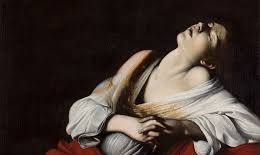The Iconic American Gothic Painting
American Gothic is one of the most iconic and recognizable paintings in American art history. Created by artist Grant Wood in 1930, this masterpiece has become a symbol of American culture and identity.
The painting features a farmer standing next to his daughter in front of a gothic-style farmhouse. The figures are portrayed in a highly detailed and realistic style, emphasizing the simplicity and stoicism of rural life in America during the Great Depression era.
One of the most intriguing aspects of American Gothic is the expressions on the faces of the farmer and his daughter. The farmer’s stern gaze and the daughter’s enigmatic smile have sparked numerous interpretations and debates among art critics and viewers alike.
Grant Wood’s meticulous attention to detail, composition, and symbolism in American Gothic reflects his deep connection to the Midwestern landscape and its people. The painting captures a sense of pride, resilience, and hard work that defined rural America at that time.
Over the years, American Gothic has been parodied, referenced, and reimagined in popular culture, cementing its status as an enduring symbol of American art. It continues to captivate audiences with its timeless depiction of Americana and its complex portrayal of human emotions.
As a testament to its cultural significance, American Gothic now resides in the Art Institute of Chicago, where it continues to inspire generations of art enthusiasts and historians with its powerful imagery and profound storytelling.
Exploring the Iconic American Gothic: Key Questions and Insights
- Who painted the American Gothic painting?
- When was the American Gothic painting created?
- What is the significance of the American Gothic painting?
- Where is the American Gothic painting currently located?
- What is the story behind the figures in the American Gothic painting?
- Why is the American Gothic painting considered iconic?
- How has popular culture referenced the American Gothic painting?
- What symbolism can be found in the American Gothic painting?
- How did Grant Wood’s background influence his creation of the American Gothic painting?
Who painted the American Gothic painting?
The American Gothic painting, one of the most renowned works in American art history, was painted by artist Grant Wood in 1930. Grant Wood, a prominent figure in the Regionalist art movement, created this iconic masterpiece that has since become a symbol of American culture and identity. Through his meticulous attention to detail and symbolism, Wood captured the essence of rural life in America during the Great Depression era, immortalizing the farmer and his daughter standing in front of a gothic-style farmhouse with their distinctive expressions. Grant Wood’s artistic vision and portrayal in the American Gothic painting continue to fascinate viewers and art enthusiasts worldwide.
When was the American Gothic painting created?
The American Gothic painting, a renowned masterpiece by artist Grant Wood, was created in the year 1930. This iconic work of art captures the essence of rural America during the Great Depression era, showcasing a farmer and his daughter standing in front of a gothic-style farmhouse. The painting’s precise details, composition, and symbolism reflect Wood’s deep connection to the Midwestern landscape and its people. Its creation in 1930 marked a significant moment in American art history, solidifying its place as a timeless symbol of American culture and identity.
What is the significance of the American Gothic painting?
The significance of the American Gothic painting lies in its portrayal of American identity, rural life, and the human experience during the Great Depression era. Created by artist Grant Wood in 1930, this iconic masterpiece captures the essence of Midwestern America with its depiction of a farmer and his daughter standing in front of a gothic-style farmhouse. The painting symbolizes resilience, simplicity, and hard work, reflecting the values and challenges faced by individuals in rural communities. The stern gaze of the farmer and the enigmatic smile of his daughter evoke a sense of pride and stoicism amidst adversity, making American Gothic a timeless representation of American culture and heritage.
Where is the American Gothic painting currently located?
The iconic American Gothic painting by Grant Wood is currently housed in the Art Institute of Chicago. This renowned masterpiece, depicting a farmer and his daughter standing in front of a gothic-style farmhouse, can be admired by visitors to the museum. Its presence in the Art Institute of Chicago allows art enthusiasts and curious visitors alike to experience firsthand the timeless beauty and cultural significance of this celebrated work of American art.
What is the story behind the figures in the American Gothic painting?
The story behind the figures in the American Gothic painting is a subject of much speculation and interpretation. The farmer standing next to his daughter in front of a gothic-style farmhouse has sparked curiosity about their relationship and individual identities. Some believe that the farmer represents the traditional values of hard work and perseverance, while his daughter symbolizes youth and hope for the future. Others suggest that they may embody themes of duty, family, or even isolation in the face of economic hardship. Grant Wood’s deliberate ambiguity in their expressions leaves room for viewers to project their own narratives onto the figures, adding layers of depth and intrigue to this iconic American artwork.
Why is the American Gothic painting considered iconic?
The American Gothic painting is considered iconic for several reasons. Firstly, its striking composition featuring a farmer and his daughter standing in front of a gothic-style farmhouse immediately captures the viewer’s attention. The meticulous attention to detail and realistic portrayal of the figures reflect artist Grant Wood’s skill and craftsmanship. Additionally, the painting’s ability to evoke a sense of Americana and rural life during the Great Depression era resonates with viewers, making it a symbol of American culture and identity. The enigmatic expressions on the faces of the farmer and his daughter have also contributed to the painting’s enduring popularity, sparking interpretations and discussions among art enthusiasts and critics alike. Overall, the American Gothic painting’s unique blend of realism, symbolism, and cultural significance has solidified its status as an iconic masterpiece in American art history.
How has popular culture referenced the American Gothic painting?
Popular culture has frequently referenced the American Gothic painting in various creative ways. From television shows and advertisements to music album covers and Halloween costumes, the iconic imagery of the farmer and his daughter in front of the gothic-style farmhouse has been reinterpreted and parodied across different mediums. Artists, designers, and filmmakers have drawn inspiration from Grant Wood’s masterpiece to make social commentary, evoke nostalgia, or simply pay homage to a quintessential piece of American art. The enduring popularity of American Gothic in popular culture showcases its timeless appeal and cultural significance that transcends generations.
What symbolism can be found in the American Gothic painting?
The American Gothic painting by Grant Wood is rich in symbolism that reflects the artist’s commentary on American rural life during the Great Depression. The most prominent symbols in the painting include the gothic-style farmhouse, which represents traditional values and stability, contrasting with the modernizing world. The pitchfork held by the farmer symbolizes hard work and labor, embodying the resilience of rural Americans facing economic challenges. Additionally, the expressions of the farmer and his daughter convey a sense of stoicism and duty, reflecting the enduring spirit of perseverance in times of hardship. These symbols collectively evoke themes of tradition, work ethic, and resilience in the face of adversity, making American Gothic a powerful representation of American identity and values.
How did Grant Wood’s background influence his creation of the American Gothic painting?
Grant Wood’s background played a significant role in influencing his creation of the American Gothic painting. As a native of Iowa and a product of the American Midwest, Wood drew inspiration from the rural landscapes and people that surrounded him. Growing up in a farming community, he developed a deep appreciation for the simplicity and resilience of rural life, which is evident in the portrayal of the farmer and his daughter in the painting. Wood’s connection to his Midwestern roots shaped his artistic vision and provided him with a unique perspective on American identity, ultimately leading to the creation of one of the most iconic works in American art history.




